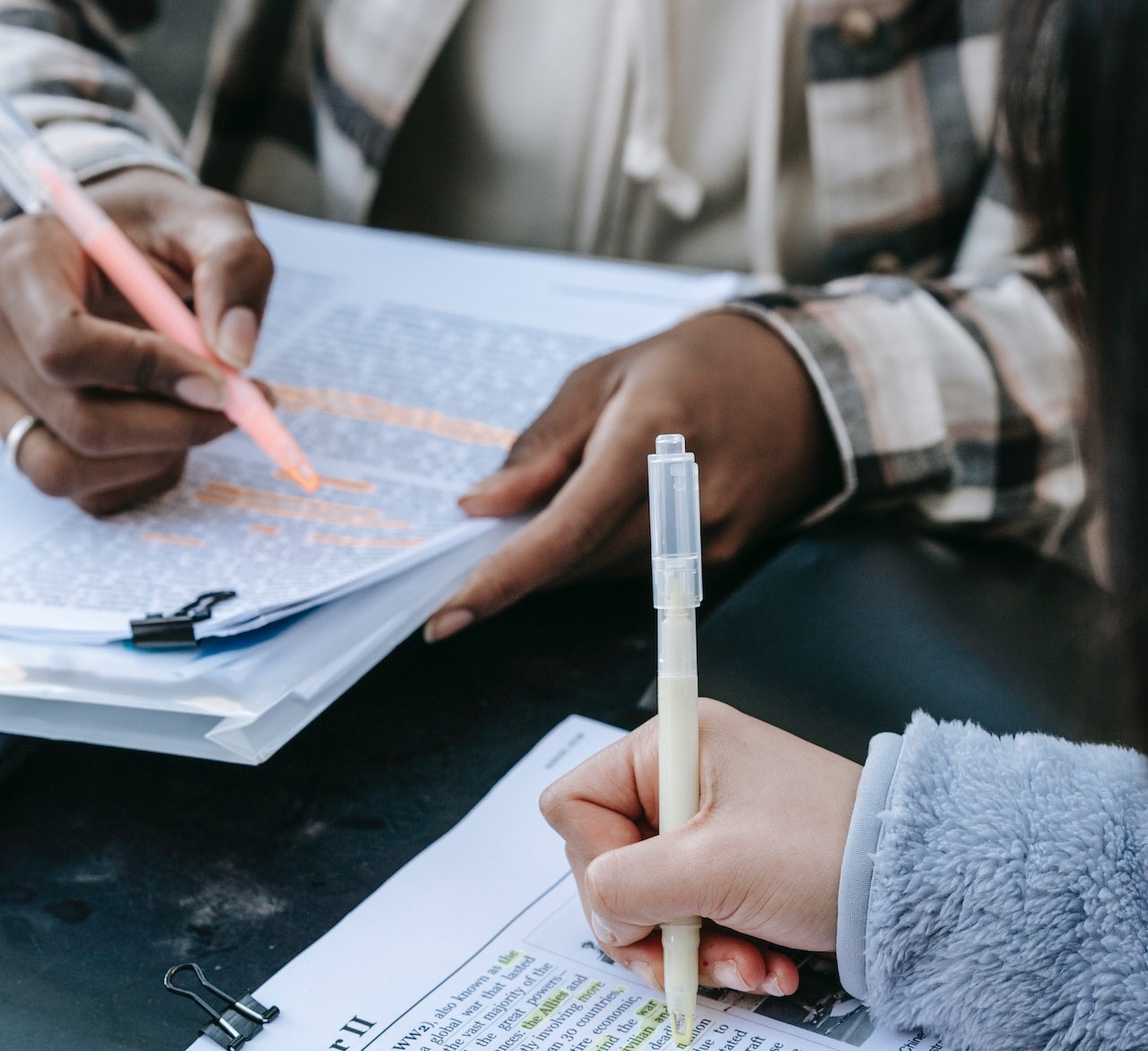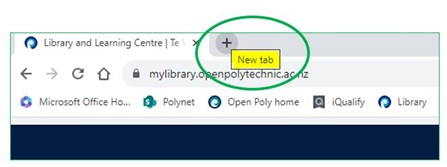Introduction
|
These five skills are covered in this guide. Together they are called Information Literacy. |
Why is information literacy important?
Being information literate will help you write better assessments. More than this though, it is a skill for lifelong learning. It enables you to think critically when navigating the world of information, including mis/disinformation.
The video below gives a good overview of these five skills in both academic study and the real world:
(Seminole State Library, 2014)
Knowing what you need
Start by reading your assessment instructions carefully:
- Are particular readings from your course mentioned in your instructions?
- Are you also asked to look for additional sources? A particular type? e.g. scholarly journals, reports. Or a range?
- Think about what the question is asking. What's the topic?
- Depending on the task, you might need to find information that: expands on the topic / gives examples / provides evidence, statistics etc.
Different types of information are used for different purposes.
Below we outline what each type is useful for and where to find it. If you're still unsure about what information you need, check the Assessment Talk channel in your course, ask your tutor, or get in touch with one of our Library Liaisons.
Books
useful for: Comprehensive overiew; background and detail of a subject or theory
found via: Library - use the Catalogue search option above. Book chapters might appear in course readings
Example: Oxford textbook of nature and public health
Company websites
useful for: Company data, statistics
found via: Google
Example: https://www.thewarehousegroup.co.nz/
Organisational websites
useful for: consumer information, industry knowledge, statistics
found via: Google
Example: https://www.nzpcn.org.nz/flora/ ; https://barnardos.org.nz/
Government websites
useful for: policies, consumer information, statistics, reports
found via: Google
Example: https://www.mbie.govt.nz/ ; https://www.stats.govt.nz/
Journal articles
useful for: scholarly research on a specific aspect of a topic
found via: Library Databases or via the Search everything or Advanced search options above; Google Scholar; Course readings
Example: Economic Dimensions of Environmental Citizenship
Magazine articles
useful for: general interest stories, current affairs, examples of public opinion on a topic
found via: Library Databases or via the Search everything or Advanced search options above; Google Scholar; Course readings
Example: Take charge of your health: Finding emotional wellbeing.
News articles
useful for: coverage of recent events, general interest stories
found via: Library Databases or via the Search everything or Advanced search options above; Google Scholar; Course readings
Example: Emergency services - an inside story.
Reports
useful for: investigation/analysis of an issue
found via: Library Databases or via the Search everything or Advanced search options above; Company/government websites; Course readings
Example: BMI Research: New Zealand Tourism Report.
See our next section Finding what you need for tips and techniques to search successfully.
Finding what you need
 Once you’ve determined what information you need, the next step is knowing how to find it.
Once you’ve determined what information you need, the next step is knowing how to find it.
Which keywords you select and how you use them will have a big influence on your results.
Our Getting Started section has some handy videos and covers how to search in our library, how to find additional course readings, and how to make the most of advanced searching - particularly useful if you need to find research articles.
Our Subject Guides can also be a great place to start looking for suitable information for your assessment.
Study Toolkit
The Toolkit* has lots of great information on searching. In particular, see the following sections:
- Assessments: Research
- Using the Library & Learning Centre
(* you are freely enrolled in the Study Toolkit - you should see it on your iQualify Dashboard. Contact us, if not).
What about Google? Of course Google is a very useful tool for information. Make sure, though, you see our next section Evaluating sources to make sure you are finding reliable information.
Evaluating sources
 How do you evaluate the information you find, especially when Googling?
How do you evaluate the information you find, especially when Googling?
Lateral reading and CRAAP
It's important to use a range of techniques when evaluating a source. We recommend using lateral reading alongside the CRAAP method.
What is the CRAAP method?
The CRAAP method evaluates a source, like a webpage, using the criteria of:
Currency, Relevance, Authority, Accuracy, Purpose. Read more.
These are all good things to look for, but simply scanning a source to decide if it is suitable under these criteria is not always a reliable test. Lateral reading can help.
What is lateral reading?
Lateral reading is when you cross-check a source using other sources to determine if the author/publisher and content are credible. Using lateral reading techniques gives you confidence that the source you are reading is reliable. This is particularly important with websites. Scroll down to see Lateral reading techniques.
If in doubt, check it out!
Even if you think the source is reliable, get into the habit of checking your sources*. Don’t simply rely on the source itself to convince you of its authority.
(*You may not need to do this with every source. Some sources will be recommended by your course, e.g. textbooks, scholarly articles, industry/government websites.)
GenerativeAI
Whilst GenAI tools, like ChatGPT, can be handy study tools (see Using AI tools) we don't generally recommend using them as one of your sources of information, as there is no guarantee the generated text is correct.
Evaluation Myths
Certain criteria we may have relied on in the past, are not always reliable indicators today:
Evaluation Myth |
Why this criterion is not always reliable |
| Domain Names .org .com .gov .edu .ac indicate the type of source. |
Domain names can be an indicator of the type of source, e.g. governmental, educational etc., but keep in mind it’s relatively easy for someone to set up a website with any domain name, so you may not always be able to rely on these as indicators of a particular type of site. |
| Production Value shows it's a 'good' site |
How slick or professional a site looks is not necessarily an indicator of quality. Anyone can create a well-designed attractive website, mimicking official-looking logos and style. This is why investigating the creators of the content is more important. |
| Advertisements = poor quality |
If a site has advertising, it doesn’t always mean it's a ‘dodgy’ site. Many websites have ads, even those with reliable content. However, look for sponsored/advertorial content, where an entire article/story is in fact an advertisement. |
| About Section shows professionalism and credibility |
While it’s worth reading an About Us section as a starting point, keep in mind that anyone can write a convincing spiel to promote themselves. See below how to use lateral reading to determine the reliability of a site. |
| Citations & Linked Sources show credibility/research |
When a website includes links to other sources and citations, it is not always an indicator of quality. Make sure you investigate what these actually are rather than trusting that the links are truly research. See more under lateral reading. |
Lateral reading techniques
Not all techniques will apply to every source. Use any that may be useful in helping you decide if a source is reliable and appropriate for your study (or in life!).
Action |
Why? |
|
New tab Open a new tab in your browser. |
You need to leave the source itself to independently check it.
|
|
Author/Publisher - check Wikipedia |
Wikipedia can be a handy starting point to check out the reliability of a source. American College of Pediatricians versus |
|
Consensus |
If you notice other sources give conflicting information or you can't find another source on the topic, this may be a red flag about the reliability of your source. |
|
Fact check/Media bias Check for the title or publisher using one of our recommended fact checkers, or a media bias checker. |
Some websites may present mis/disinformation or fake news. There are a number of fact-checking sites that are dedicated to seeing if the claims in a source are based on fact, e.g. FactCheck.org, Google Fact Check Explorer, PolitiFact Likewise, news sources may show varying degrees of bias: Media Bias/Fact Check See more fact checkers (Berkeley Library, 2023). |
|
Find the original source If your source, e.g. a newspaper article, is reporting on another source, see if you can access the original source. |
One source reporting on another source is not necessarily a problem. However, to make sure the source has been quoted accurately, you are best to go to the original source, if possible. You may have access to the source via our Library. |
I need help!
It’s not always straight forward deciding if a source is a ‘good source’. If you’re ever in doubt and would like some assistance, that’s what we’re here for! Don’t hesitate to contact us and one of our friendly Library & Learning Support Liaisons will be in touch.
The Open Polytechnic Library & Learning Centre acknowledges the use of the Lateral Reading information provided by the University of Wisconsin - Green Bay Libraries as a valuable source in creating the content for this page.
Using information
 How you use and apply information can have a big influence on the flow and quality of your assessment.
How you use and apply information can have a big influence on the flow and quality of your assessment.
In this section we look at how to incorporate information into your writing.
Make sure you also see Acknowledging sources for how to reference, quote or paraphrase information.
Purpose
When referring to another source, it should be clear to your reader why you are including it.
You might be adding the information to:
- give an example
- introduce a concept
- show evidence
- present an argument
- explain something technical
- present an opinion
- other...
Flow
Whatever the purpose, it must fit with the main idea of the paragraph and be smoothly incorporated within your writing. It’s also important to show you understand the information, i.e. that you aren’t just throwing in a piece of information that sounds good without backing it up with your own discussion or examples.
Here’s an example of words used to introduce and link information. You won’t necessarily have this many sources in one paragraph, but it gives you the idea:
|
The process of making pasta is a skill that has been honed over centuries. Early pasta originated in China. According to Romero (2019) Marco Polo brought it back from the east to Italy. However, early pasta was very different to the pasta we think of today, and there are different opinions on what it was originally made from. Davis & Phillips (2019) state that the earliest pasta was made from rice flour, yet pasta chef and historian, Roberto Fellini (2015) argues that millet and buckwheat flours may have been the first types of flours used to create early forms of the popular food. A third theory is that a combination of different flours was used (Pasta Italia, 2020). Despite these differing views about the flours used in early pasta, it is clear that the pasta we generally use today is wheat based. Wheat pasta is… |
Reporting what someone has said is only one aspect of including information. As part of your discussion you may also need to:
link ideas, give examples, analyse, re-phrase a statement, provide a comparison or contrast, show a consequence.
Useful vocabulary
The table below gives you many more words to use. Try incuding these in your assessments along with the information you have found:
| Type of word | Examples | |
| Reporting |
According to Parata... Jones & Allen address this by... argue(s) assert(s) claim(s) conclude(s) define(s) establish(es) find(s) |
maintain(s) mention(s) outline(s) predict(s) promote(s) report(s) show(s) state(s) suggest(s) |
| Linking: sequence |
firstly, secondly, thirdly another also finally |
|
| Linking: addition |
in addition furthermore and as well as also too |
|
| Giving an example |
for example for instance that is to say such as including namely |
|
| Analysing or backing up a statement |
therefore accordingly as a result of the result is that are resulting from consequently it can be seen that evidence shows this because of this thus |
hence for this reason owing to x this suggests that it follows that otherwise in that case that implies in the same way likewise |
| Contrasting |
by contrast although compared with conversely however nevertheless yet however nonetheless espite x |
notwithstanding x in spite of x while x may be true, it is also… whereas conversely in comparison by contrast another view is… |
| Comparing |
compared with in a similar way in the same way likewise similarly |
|
Acknowledging sources

Information sources used in your assessments must be acknowledged, whether you're quoting the information (taking the exact original words), or paraphrasing (putting the information into your own words).
A referencing system is used. It involves two parts:
In-text Citations - state the author/year (page number) of a source. These sit within the body of your writing alongside each piece of information you are quoting/paraphrasing.
References - a full list of all the sources you referred to in your writing. This sits at the end of your document.
Open Polytechnic uses the APA 7 style of referencing.
See our page APA Referencing section for a full explanation and referencing guides.

 An important part of your study is dealing with information, including:
An important part of your study is dealing with information, including:
